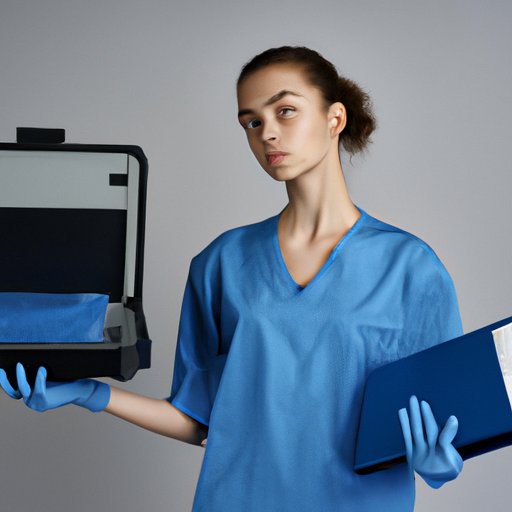Introduction
Radiology technicians are medical professionals who specialize in performing radiologic exams and procedures. They are responsible for operating sophisticated medical imaging equipment and providing patient care in a radiology setting. Becoming a radiology technician requires specialized education and training in order to understand the imaging modalities and procedures.
Educational Requirements
In order to become a radiology technician, one must have an associate’s degree or higher from an accredited institution. The degree program typically consists of courses in anatomy and physiology, medical terminology, radiation physics, radiobiology and pathology, radiological positioning, and quality control. Additionally, clinical experience is required in order to obtain certification as a radiology technician.
The American Registry of Radiologic Technologists (ARRT) offers certification in several specialties such as computed tomography (CT), magnetic resonance imaging (MRI), mammography, and ultrasound. In order to maintain certification, continuing education courses must be completed every two years.
Role and Responsibilities
Radiology technicians are responsible for operating sophisticated medical imaging equipment in order to capture images of the body. These images are used by physicians to diagnose and treat diseases and injuries. Radiology technicians must also adhere to safety standards in order to protect both themselves and the patients they work with from radiation exposure.
Additionally, they must be able to communicate effectively with patients in order to ensure their comfort during the exam. According to a study published in the Journal of Radiologic Technology, “patient-centered communication skills are essential for radiologic technologists to develop in order to gain patient compliance and trust.”

Types of Radiology Exams and Procedures
Radiology technicians may be involved in a variety of exams and procedures, including X-rays, CT scans, MRI scans, ultrasounds, and mammograms. It is important that they understand the various imaging modalities and the associated risks. For instance, X-rays use ionizing radiation, which can be harmful if not used correctly.
According to the American Journal of Roentgenology, “X-ray imaging is the most commonly used modality for diagnostic imaging, but it should be employed cautiously because of the associated risks of radiation exposure.”
Working with Patients
When working with patients in a radiology setting, it is important to be patient, professional, and courteous. Radiology technicians should take the time to explain the procedure to the patient and answer any questions they may have. Additionally, they should listen carefully to the patient’s concerns and make sure they are comfortable throughout the exam.
It is also important to be aware of cultural differences and to respect each patient’s individual needs. As stated in a study published in the Journal of Radiologic Technology, “Radiologic technologists should strive to provide patient-centered care by understanding the impact of culture on communication, beliefs, and practices.”
Benefits of Being a Radiology Technician
Being a radiology technician can be a rewarding career. Radiology technicians have the opportunity to play a vital role in the diagnosis and treatment of disease. Additionally, there are many potential career opportunities in the field, including working in hospitals, private clinics, and imaging centers.
The Bureau of Labor Statistics reports that employment of radiologic technologists is projected to grow 8 percent from 2019 to 2029, much faster than the average for all occupations. This growth is expected to be driven by an aging population and advances in medical technology.
Conclusion
Becoming a radiology technician requires specialized education and training in order to understand the imaging modalities and procedures. Radiology technicians are responsible for operating sophisticated medical imaging equipment and providing patient care in a radiology setting. Additionally, they must be knowledgeable of the different types of exams and procedures they may be involved in. Working with patients and understanding cultural differences is also important. Finally, being a radiology technician can be a rewarding career with many potential opportunities.
We hope this article has provided you with an overview of what it takes to become a radiology technician. If you are interested in pursuing a career in radiology, we encourage you to explore further and consider the educational requirements, role and responsibilities, and benefits of being a radiology technician.
(Note: Is this article not meeting your expectations? Do you have knowledge or insights to share? Unlock new opportunities and expand your reach by joining our authors team. Click Registration to join us and share your expertise with our readers.)
